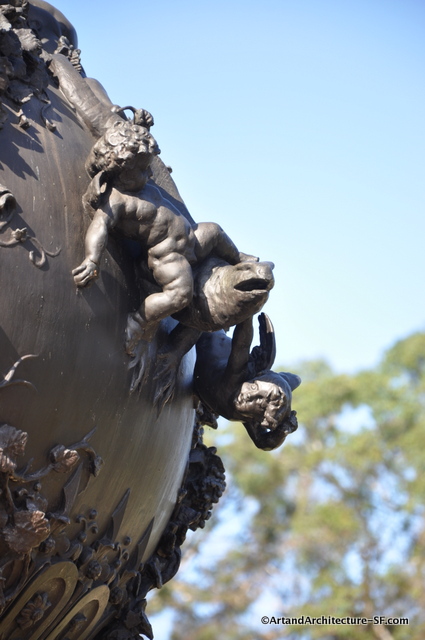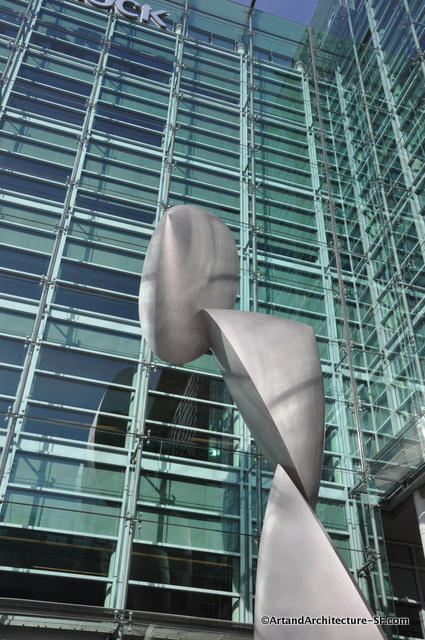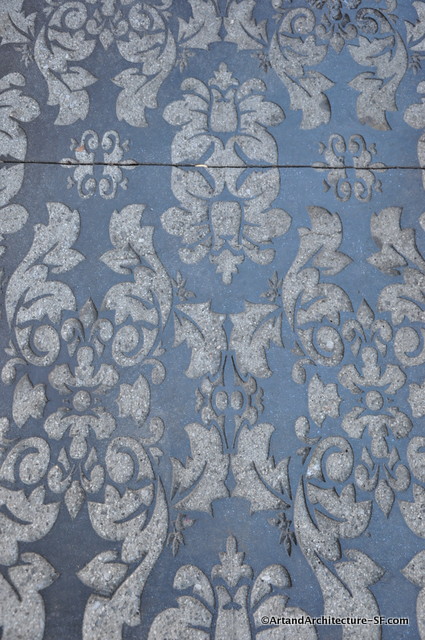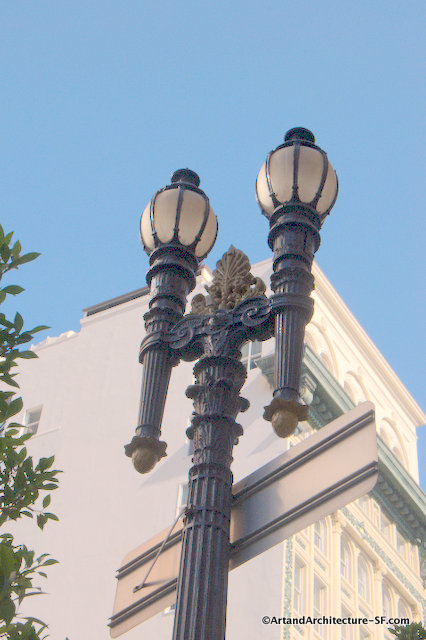This piece sits outside the deYoung Museum and the plaque attached reads: Gustave Doré created this vase for French winemakers, who exhibited it at the 1878 Paris World’s Fair. It represents an allegory of the annual wine vintage, taking the shape of a colossal wine vessel decorated with figures associated with the rites of Bacchus (the Roman god of wine). The revelers include cupids, satyrs and bacchantes, who protect the grape vines from pests. The foundry shipped this bronze version of the vase to Chicago for the World’s Columbian Exposition of 1893 and then to San Francisco for the 1894 California Midwinter International Exposition. M.H. deYoung purchased the vase at the fair’s end and later donated it to the de Young Museum.
Paul Gustave Doré was an Alsacian artist who specialized in book illustrations. Born in Strasbourg, France, on January 6, 1832, he began his artistic career in Paris when he was only 15 years old. His drawings and illustrations were groundbreaking and very popular, although he never won the acclaim of the artistic elite in France. In his later years, he spent much time in London, where he also opened a very popular gallery. He died on January 23, 1883, at the age of 51.
Doré is probably most famous for his depictions of numerous scenes from the Bible, but he also produced illustrations for many other books, including Milton, Dante, La Fontaine, Don Quixote and one of my favorites Baron Munchhausen.
















































